DACF Home → Bureaus & Programs → Maine Forest Service → Forest Health & Monitoring → Forest Pest Index → Hemlock Woolly Adelgid → Hemlock Woolly Adelgid Life Stages
Hemlock Woolly Adelgid Life Stages
- On this page:
Below you will find images and brief descriptions of hemlock woolly adelgid life stages. Images come from the Maine Forest Service unless otherwise noted. Select the image to see a larger version. More images can be found on the hemlock woolly adelgid pages of Bugwood Network's Insect Images Website, (off-site, opens in new window).
Life Cycle
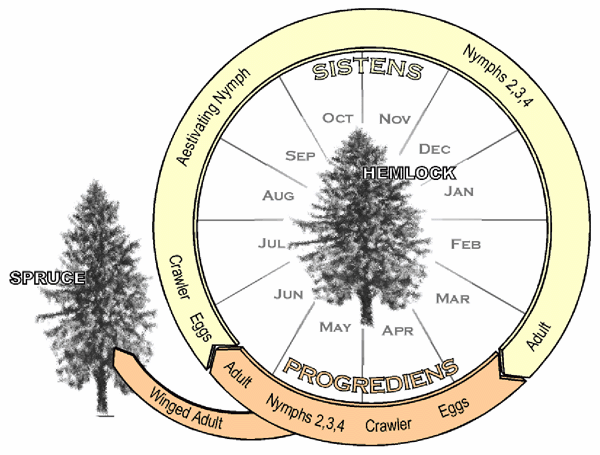
Hemlock woolly adelgids are all female in northeastern North America. They develop parthenogenetically (asexually) and have six stages of development: egg, four nymphal instars and adult. There are two overlapping generations per year. The overwintering generation (or sistens) is present from early summer through mid-spring, and the spring generation (or progrediens) is present from early spring through mid-summer.
Eggs
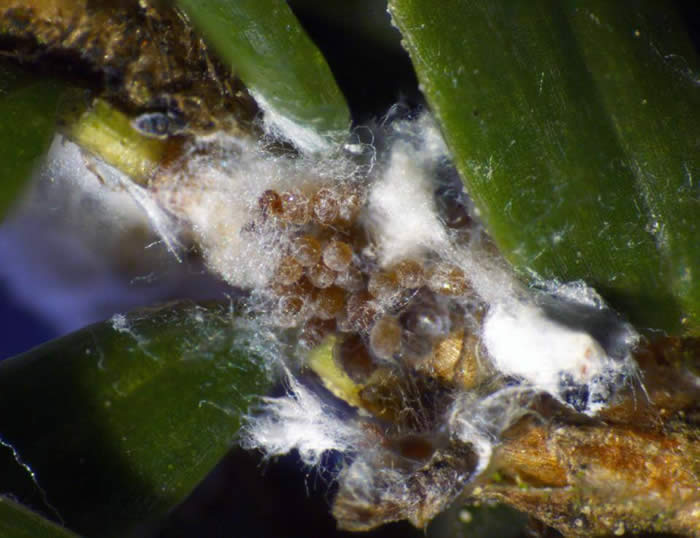
Hemlock woolly adelgid eggs Photo: USFS
Eggs of the hemlock woolly adelgid are reddish in color. They are protected by waxy wool-like material secreted by the developing adelgid. Eggs can be found by pulling apart the woolly masses and are generally present between early March and mid-June in southern Maine. The wool is somewhat sticky, and can be picked up by passing animals, resulting in the movement of eggs. These eggs have the potential to establish HWA in new areas. The overwintering generation can produce up to 300 eggs per adult, the spring generation adults are less fecund and generally produce 75 or fewer eggs. Each small white mass found on a hemlock twig in April has the potential to represent up to 300 individual insects!
Crawlers
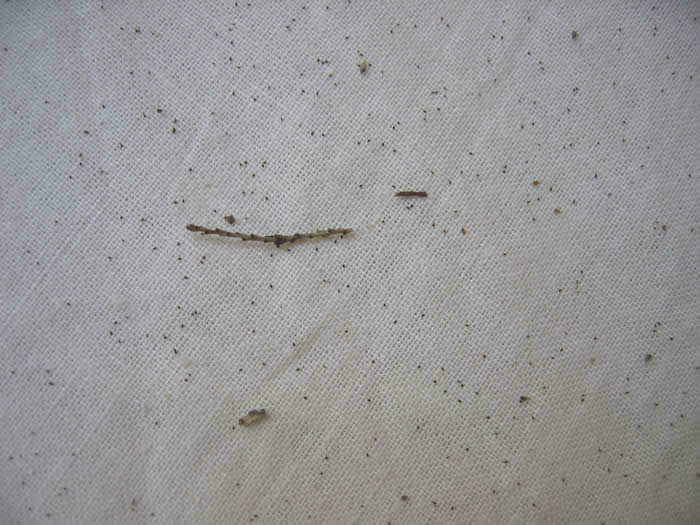
Hemlock woolly adelgid crawlers cover the canvas of a beat sheet. Kittery, ME
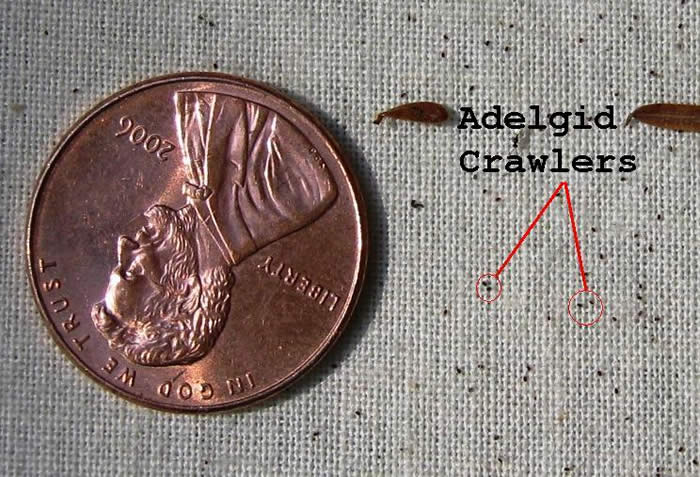
Hemlock woolly adelgid crawlers next to a penny. Kittery, ME
The hemlock woolly adelgid hatches from eggs into what is called the crawler stage. This stage is minute, highly mobile, easily moved and abundant. In southern Maine crawlers are generally present between Mid March through the end of July. There is a time in that period when crawlers are not present, but because of the overlap in generations it is best to consider the whole period as potentially having mobile crawlers. Crawlers and eggs can be easily spread and cause new areas of adelgid infestation. Other life-stages require the movement of live hemlock material (such as nursery stock or seedlings) to become established.
Settled First Instar Nymphs
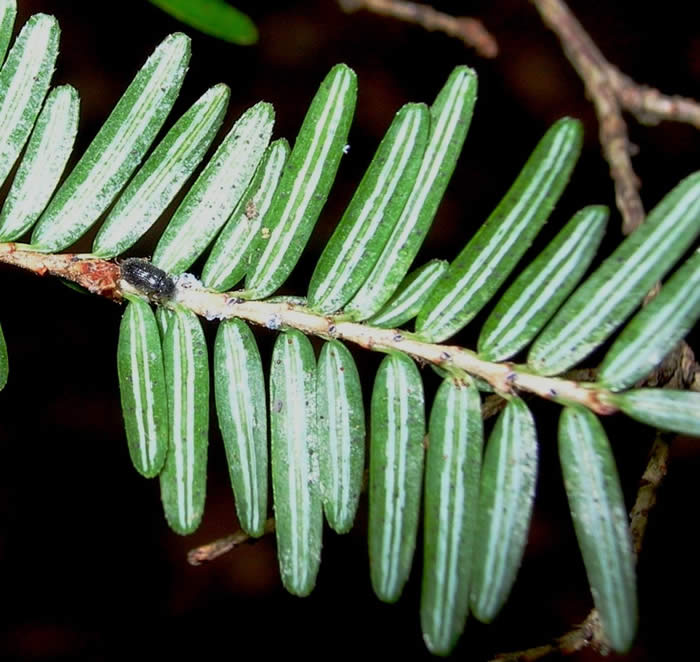
Laricobius nigrinus predator beetle approaching first instar hemlock woolly adelgid nymphs that have just broken aestivation.
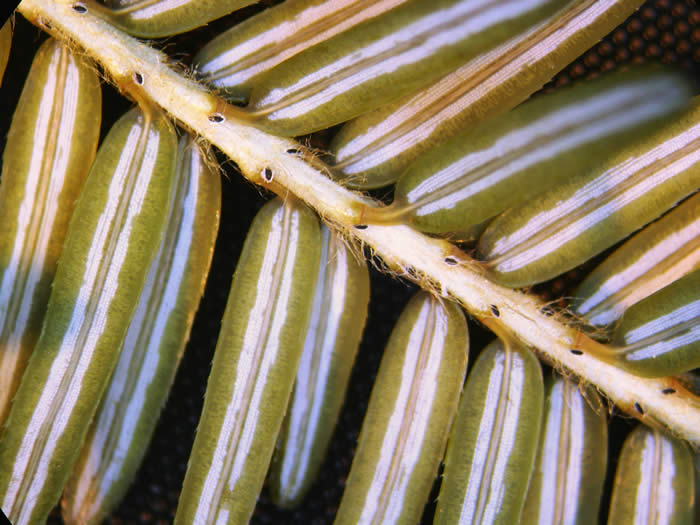
Settled hemlock woolly adelgid nymphs
Crawlers search for good feeding sites then insert their mouthparts into hemlock twigs near the base of a needle. Once a spot is chosen, the insect will not move for the rest of its life (except to withdraw its mouthparts during molting). In the spring (progrediens) generation, the adelgid develops quickly from a settled first instar nymph to a second instar nymph. However, the overwintering generation (sistens) undergoes a period of inactivity during the summer months known as aestivation. During this time the nymph has a barely discernable ring of wool surrounding its body and looks somewhat like a minute black sesame seed. A hand lens or other magnification source is generally needed to see this stage of the adelgid.
Instars 2 through 4 and Adults
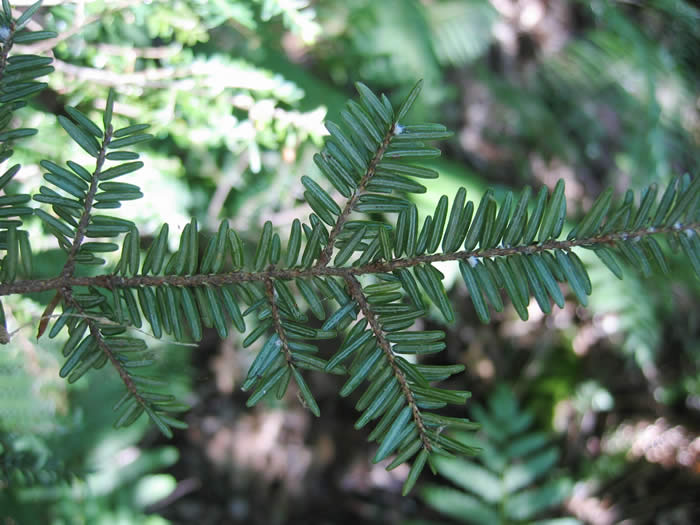
Light infestation of hemlock woolly adelgid, Saco, ME
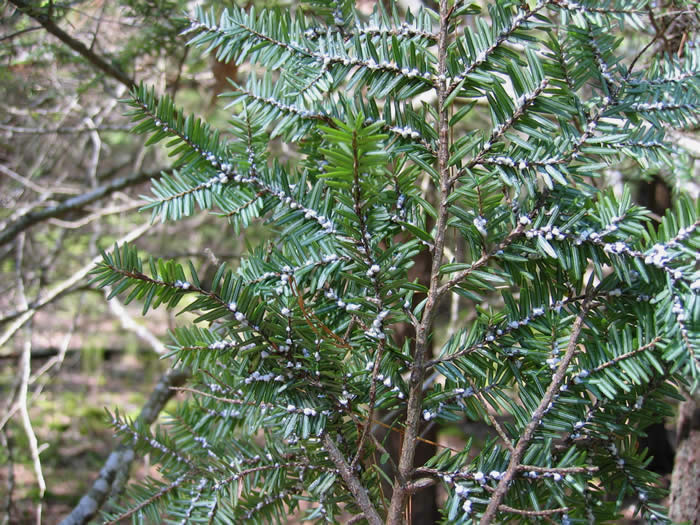
Heavy infestation of hemlock woolly adelgid, Kittery, ME
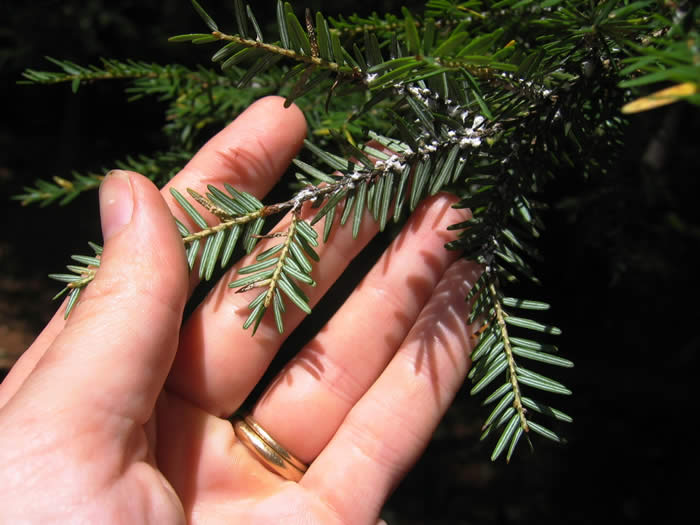
Hemlock woolly adelgid wool on hemlock twig, Kittery, ME
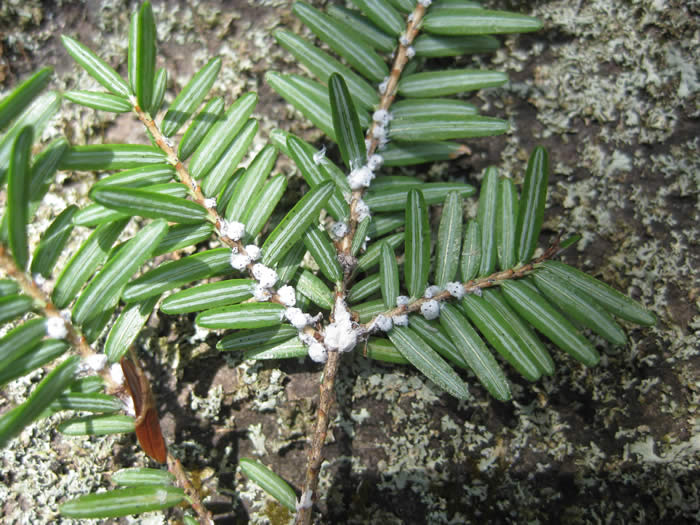
Hemlock woolly adelgid wool on hemlock twig
From the 2nd instar through the adult stage, HWA secrete a waxy, wool-like covering over their bodies. This wool is particularly distinctive from late fall to early summer. From late summer to early fall, the nymphs aestivate (the summertime equivalent of hibernating) and do not produce wool. Because of this they are easier to find in the wintertime. The woolly masses increase in size as each generation matures and are generally between 1/16th and 1/8th inch across. The adult adelgid will lay her eggs in the wool behind her. Heavy rains can wash off wool from previous generations.
Winged Adult (does not survive in North America)
As the spring generation (progrediens) matures, winged as well as wingless adults develop. The winged adults (sexupara) fly off to seek spruce trees to mate and lay eggs. However, because the species of spruce needed are not present in North America, these winged adults die without reproducing.